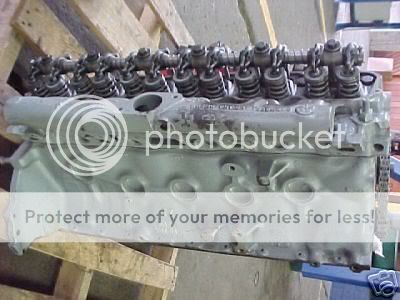Welcome.
The Falcon Six Performance Handbook is exactly what you need.
Ford is run by Finacial whizz kids and Engineers, forced to by the 1978-1981 Mailase era cost of certifying and making legal automobiles to the public.
For the Falcon Six Performance Handbook to cover the catalytic converter 1976 to 1983 emissions Carb I6 engines, it would have taken 500 pages, not 100.
I can help you with the systems that exist on the catalytic converter era cars.
So the information is killer, and it often sounds like an inpersonal re-buff over the internet. You'll get over it, and once you have an a-ha moment,

you won't feel like your being attacked with an Information Pipe Wrench anymore.
The 3.3 in line six was a 5 year veteren of Fox car sales, about 60% of all 1978 to 1983 Foxes had the engine.
The 1979 German V6 engine had a Z VIN code, 2.8 liter 109 hp engine.
Then the 1979 Cleveland built T VIN code, 3.3 Liter 85 hp engine.
Then B code 91, 94.5, 87 or 97.5 hp 3.3 liter (Fox 80-82 Mustang, Fox 80-82 Capri, 80-82 Mercury Cougar, 80-82 Mercury Cougar XR7, 80-82 Ford Thunderbird, 80-82 Fox Mercury Zephyr, 80-82 Ford Fairmont
Then X code 87-91 hp 3.3 liter (Fox Mercury Zephyr, Mercury Marquis, Ford Fairmont, Ford LTD compacts; The Mustang and Capri replaced the 3,3 with the Code 6 3.8 Essex 90 V6)
It always had only the 1946 Holley 1-bbl, a very competant, simple carb. For 1978-1979, it was not a carb that allowed the engine to idle smoothly, nor was it really well sorted. Later on for 1980-1983 Foxes, the engine was the same, but had a B or X code.
So its not the same code, but its the same engine.
it gained a 1946"C" version, and some of the best features and upgrades Ford ever made to a domestic carb. They were rather hard to undestand
1. Load Control Valve
2. Solenoid Control that interfaced with
3. a Air Conditioner vaccum operated throttle modulator,
4. then an Idle Stop Control solenoid and
5. an electric Bowl Vents, and
6. a electric choke with an integrated Choke Pulldown.
Those six additions were carefree and fixed a lot of problems the 78 to 79's had.
Your car just has the basic 1946, none of those extra features. The engine has a 61 to 66 Holley jet, and responds to jetting up or down just like any other Holley. You can adjust the accelerator pump stroke by bending the actuator wire, and its float bowl is reversed and hidden under the choke control.
The axle and trans codes are on the door post sticker if it hasn't been removed. All 1979 sixes , the one year only 2.8, or the replacment 3.3 engine, all 3.08:1 Y code axle
C4 auto
85 hp T code engine was a middle of the year replacement to the much faster, quicker and just as ecconomial 2.8 liter six.
The 3.3 was indeed a sad addition. It lost 24 horsepower and 1.5 seconds off the 1979 2.8 German Cologne 60 degree V6 accelration figures.
In line SIx was standard Fox Mustang option for 79, 80, 81, 82, then got withdrawn and replaced by the 3.8 Canadian Essex 90 degree V6, which was a 4.2 liter V8 option "replacement"































